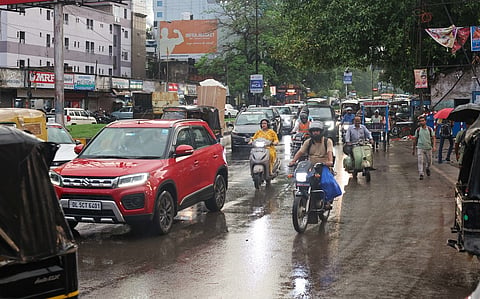Will CCTS move the needle for a clean transport sector?
India's upcoming Carbon Credit Trading Scheme (CCTS) aims to decarbonize the transport sector, a major greenhouse gas emitter.
With methodologies adapted from global frameworks, the scheme offers opportunities for electric vehicle projects, especially for fleet operators.
However, challenges remain in meeting 'additionality' requirements, and the success of CCTS will depend on collaboration and policy support.
As India gears up to launch its own independent carbon market, the Carbon Credit Trading Scheme (CCTS), by mid-next year, the transport sector emerges as a potential beneficiary. However, the sector—the third-largest contributor to national greenhouse gas (GHG) emissions, over 90 per cent of which stem from road transport—faces some key questions too. Can CCTS meaningfully accelerate decarbonisation in this sector? What are the actual opportunities created, and who benefits the most?
Latest policy moves
Recognising the crucial role of the transport sector in emission reduction, the central government has included the same in the offset mechanism—one of the two carbon-credit-earning mechanisms under CCTS that involves a voluntary project-based credit method. Emission reduction technologies, such as electric vehicles (EVs), and their corresponding methodologies and procedures to estimate and register for carbon credits have been published by the Bureau of Energy Efficiency (BEE), which is spearheading the CCTS implementation. Most of the methodologies regarding EVs seem to be adapted from the United Nations Framework Convention on Climate Change (UNFCCC) Clean Development Mechanism (CDM) and Article 6.4 of the Paris Agreement.
Emerging opportunities for clean transport projects
India’s participation in global voluntary carbon markets has been dominated by renewable energy (RE) and forestry projects, with projects from the transport sector being rare. Further, clean transport projects contribute to less than two per cent of the global carbon credit volume. This scarcity of credits from the transport sector presents a renewed opportunity for stakeholders in light of the upcoming CCTS launch, as the demand for quality credits from diverse sectors goes up. Limited projects from the transport sector, such as the operation of EVs, also mean less impedance for project registration and approval, shortening the time required to earn carbon credits.
Primary beneficiaries
Amongst all the EV users, the EV fleet operators, both public and private, stand to gain the most due to their high daily commute distances and fleet sizes. However, fleet operators in the electric two-wheeler (2W) segment may struggle to meet CCTS’s ‘additionality’ clause (which necessitates demonstration of adoption barriers such as financial or technological), as e-2Ws are now at price parity with internal combustion engine (ICE) models. Other segments such as e-cabs/taxis, e-light commercial vehicles, e-buses, and e-trucks are favourable candidates due to their higher purchase prices than their ICE counterparts. Additionally, e-bus and e-truck projects will have a higher carbon-credit-earning potential due to higher emissions (CO2/km) from their heavy-duty diesel versions.
RE is key: A case study of an e-bus
The carbon-credit-earning potential of EVs also depends on the emissions from the electricity used for charging. State transport undertakings (STUs) can earn an annual revenue of up to Rs 4,000-7,000 per e-bus while using grid electricity, assuming the national grid emission factor (GEF, 0.727 kg CO2/kWh).
However, as the share of RE consumption varies across states, the carbon credit revenue for EVs is also bound to vary accordingly. In states with a high RE share (GEF, 0.35 kgCO2/kWh), revenue per e-bus per annum goes up to Rs 30,000. Thus, an STU with 1,000 e-buses can generate up to Rs 3 crore annually, provided it holds the ownership and trading rights to the carbon credits and ensures that there is no double counting.
The outlook
CCTS presents an opportunity for collaboration between clean transport project proponents (i.e., EV fleet operators, RE enterprises, and charge point operators [CPOs]) and green financiers to enable the coupling of energy transition and carbon markets. Despite the time, efforts, and costs associated with registration, compliance with monitoring, reporting, and verification (MRV) mechanisms, and verification, carbon credits open a new value stream for clean transport companies. Further, the first movers will have the edge both in terms of monetisation and market positioning.
Some recent government policy signals are encouraging too. For instance, the Delhi government plans to facilitate the earning of carbon credits by EV users as part of their upcoming EV Policy 2.0. The Ministry of Finance recently published the country’s Climate Finance Taxonomy to streamline capital inflows to GHG emission reduction projects. CCTS, in conjuncture with these developments, could create a more enabling environment for decarbonising road transport with its financial incentives. However, it remains to be seen how quickly and ambitiously the sector responds.
Vivek Gavimath works as a Senior Analyst in the Green Mobility team of the Strategic Studies sector at the Center for Study of Science, Technology and Policy (CSTEP), a research-based think tank.
Views expressed are the author’s own and don’t necessarily reflect those of Down To Earth

